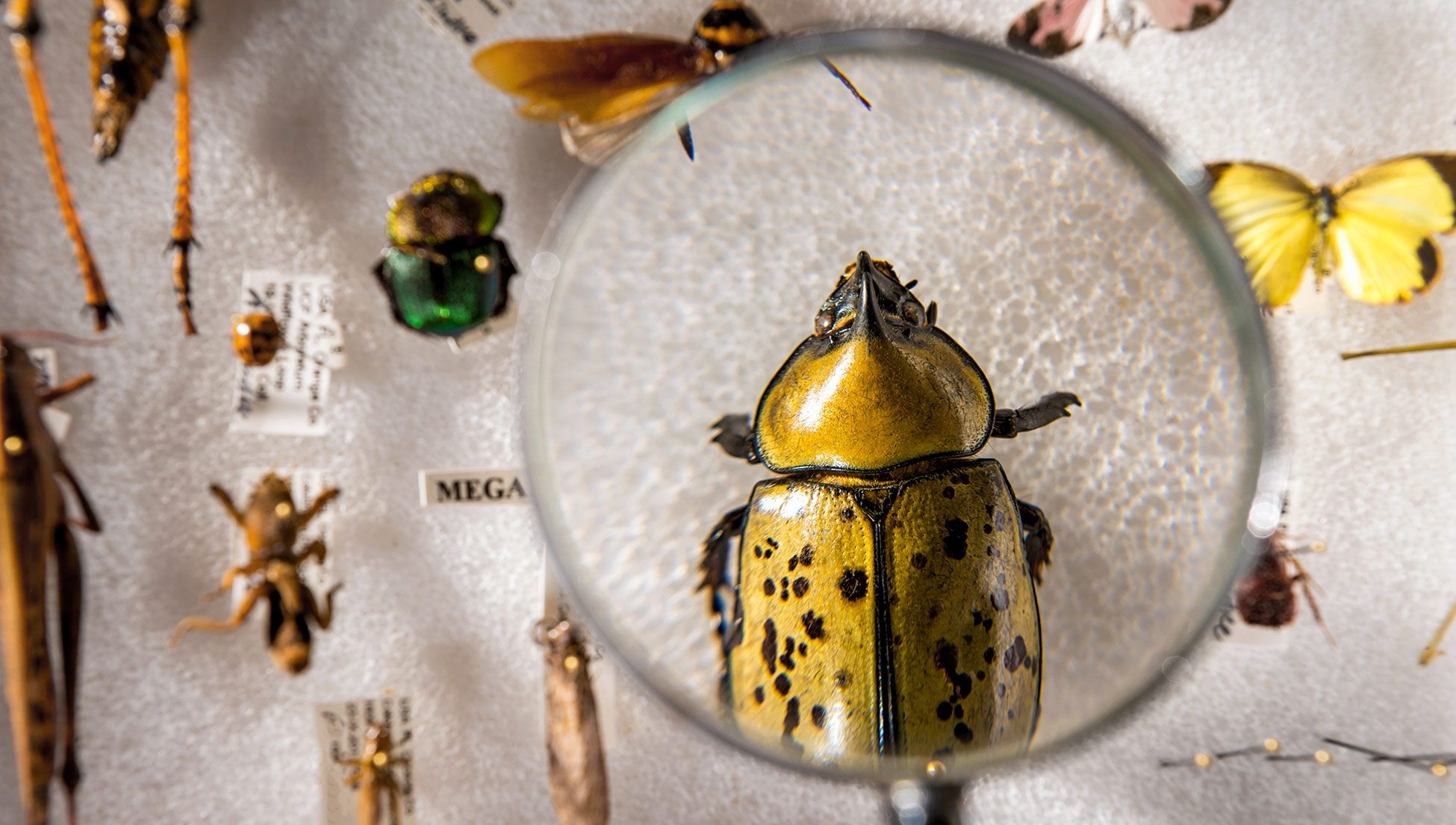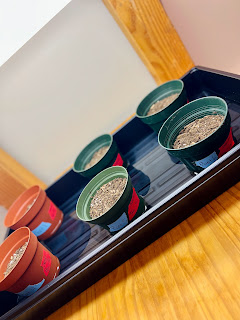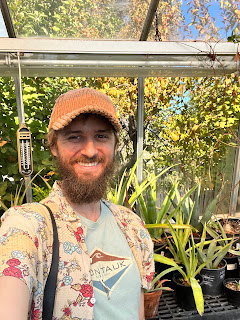Fellow T.R.A.I.N scholars,
Very excited to be able to post my research proposal. Entomology has long been a field I am fascinated with. I am looking forward to it heating up so that I am able to get my hands into the soil and start capturing arthropods!! I hope everyone is having an amazing week!

Alex Shaw
Dr. Ortiz
Measuring and Comparing Insect Diversity in Two Separate College Plots
Abstract:
Researchers look forward to working with plants and animals for many reasons. Some believe that it is to understand ourselves better and our biological role. Others see the functional benefit of insects on a chemical/physical level and the resourcefulness of the research. For this research project, Dr. Ortiz and researcher Alex Shaw will collect insects from two college garden plots, pin them and create a dichotomy to represent the diversity of the different species from each Garden.

Arthropods crawling (or flying) through the Garden will be involuntarily collected in hidden pitfall traps, the most widely used technique for capturing arthropods. (Hancock 2011) The traps will be checked at the same time each week for collection and ultimate pinning. The team is led to believe that there's a higher level of biodiversity in the edible Garden (Featured on the left) (Livingston 2020) due to a variety of factors: the edible Garden's soil is richer in nutrients and food, making it an ideal place to call home for an arthropod. More than half of arthropods are vegetarians, making a garden the perfect place to settle into and reproduce (Bassett 2019)
This topic is significant because our understanding of insects helps many fields of science and development. Scientists from Washington State University are sure about insects' essential roles in biological diversity, pharmaceutical epidemiology, food and storage, and many others. (Washington State University nd)
For humanity to live in equilibrium with the Earth, researchers must understand how nature works and strive to connect with its inhabitants. "Professional entomologists contribute to the betterment of humankind by detecting the role of insects in the spread of disease and discovering ways of protecting food and fiber crops and livestock from being damaged." (Washington State University nd). Insects are known for their ability to give life and also take life away. Mosquitos are known to spread Malaria in some parts of the world, among other harmful diseases.
Insects are responsible for some of the most prominent roles in nature. As nature's pollinators, they play critical roles in plant reproduction and diversity. The more insects, the more bird and reptile species, and furthermore mammal species. They effectively lift the entire biological pyramid of life. Breaking apart these critical components to further our understanding as researchers is imperative.
Some might stop and wonder, what kind of diversity could a researcher find in an urbanized plot, surrounded by buildings for miles in each direction. Research scientists have long contemplated the effect of urbanization and ecosystems, and how they are related. “Present-day urban arthropod species are either relicts from a pre-urban ecosystem (Germann, Sattler, Obrist, & Moretti, 2008), have immigrated during and after urbanization into the novel ecosystem (Hochuli, Christie, & Lomov, 2009), or were – usually unintentionally – introduced by man (DAISIE, 2009, Germann et al., 2008).” (Sattler 2011). Even if these insects are relics from a forgotten time, they most likely will differ garden to garden. The native garden has soil more reflective of the Arizona desert, while the edible gardens’ nutrient levels are much higher, wirth softer ground.
Hypothesis: The Edible Garden, because of its: location, more fertile soil, and food-producing plants, will have higher insect diversity gathered from the pitfall traps.
Research Question: Of the two gardens, Edible and Native, which is home to a higher level of arthropod diversity; what are the qualities of a dispersion pattern; random, clumped, uniform? (Britannica)
|
GROUND DWELLING ARTHROPOD VARIABLE TABLE |
||||
|
NAME |
I/D/C |
SYMBOL |
UNITS |
DESCRIPTION |
|
Plant Species |
I |
#P |
# of species |
Plant species present during observation. |
|
Plant Cover vs Bare Area |
I |
PC% / BA% |
% |
Percentage of the area covered by plants. |
|
Location |
I |
Latitude / Longitude |
Coordinates |
Latitude and Longitude of specific garden plots. |
|
Duration of study |
C |
Week/Day |
Week/Day |
The timeframe that specimens were trapped and observed. |
|
Sunlight |
C |
hν |
% |
The amount of sunlight reaching each garden |
|
Arthropod Biodiversity (In Orders) |
D |
#AO |
Number of orders / Number of morpho-species |
Arthropod order/morpho-species cataloged during observation. |
|
Arthropod Biodiversity (specimens) |
D |
#AS |
# of |
Arthropod specimens cataloged during observation. |
(Livingston 2020)
Possible outcome 1: Researchers do not notice any difference in arthropod diversity between edible and native gardens.
Possible outcome 2: Edible Garden will show higher arthropod diversity than native.
Possible outcome 3: Native Garden will show higher diversity than edible Garden.
Possible Outcome 4: Diversity is found in either Garden, but certain variables present have skewed the results, and/or variables not accounted for have impacted the results.
Work Cited:
Basset, Y., & Lamarre, G. P. A. (2019, June 28). Toward a world that values insects. Retrieved
February 27, 2020, from https://science-sciencemag-
org.ezproxy.pc.maricopa.edu/content/364/6447/1230
Britannica, T. Editors of Encyclopedia (2008, Dec 03). dispersion. Encyclopedia Britannica.
https://www.britannica.com/science/dispersion-biology
Hancock, M. H., & Legg, C. J. (2011). Pitfall trapping bias and arthropod body
mass. Insect Conservation and Diversity, 5(4), 312–318. doi: 10.1111/j.1752-
4598.2011.00162.x
Harrison, J., & Duell, M. (2016, January 12). Ask a Biologist. ASU for You.
https://askabiologist.asu.edu/why-study-insects
Livingston, C. (2020). Survey of Arthropod Biodiversity in the Phoenix College Edible
Garden [Nation Science Foundation Internship, Phoenix College].
https://docs.google.com/document/d/1mMonmFMlpn179pZlGalQZ-ojuNKqgFhS/edit
Washington State University (n.d.). The What & Why of Entomology. Entomology.
https://entomology.wsu.edu/prospective-students/the-what-why-of-entomology/
Sattler, Thomas, et al. “Urban Arthropod Communities: Added Value or Just a Blend of
Surrounding Biodiversity?” Landscape and Urban Planning, Elsevier, 22 Sept. 2011,
www.sciencedirect.com/science/article/pii/S0169204611002593.
Basset, Y., & Lamarre, G. P. A. (2019, June 28). Toward a world that values insects. Retrieved
February 27, 2020, from https://science-sciencemag-
org.ezproxy.pc.maricopa.edu/content/364/6447/1230


Comments
Post a Comment